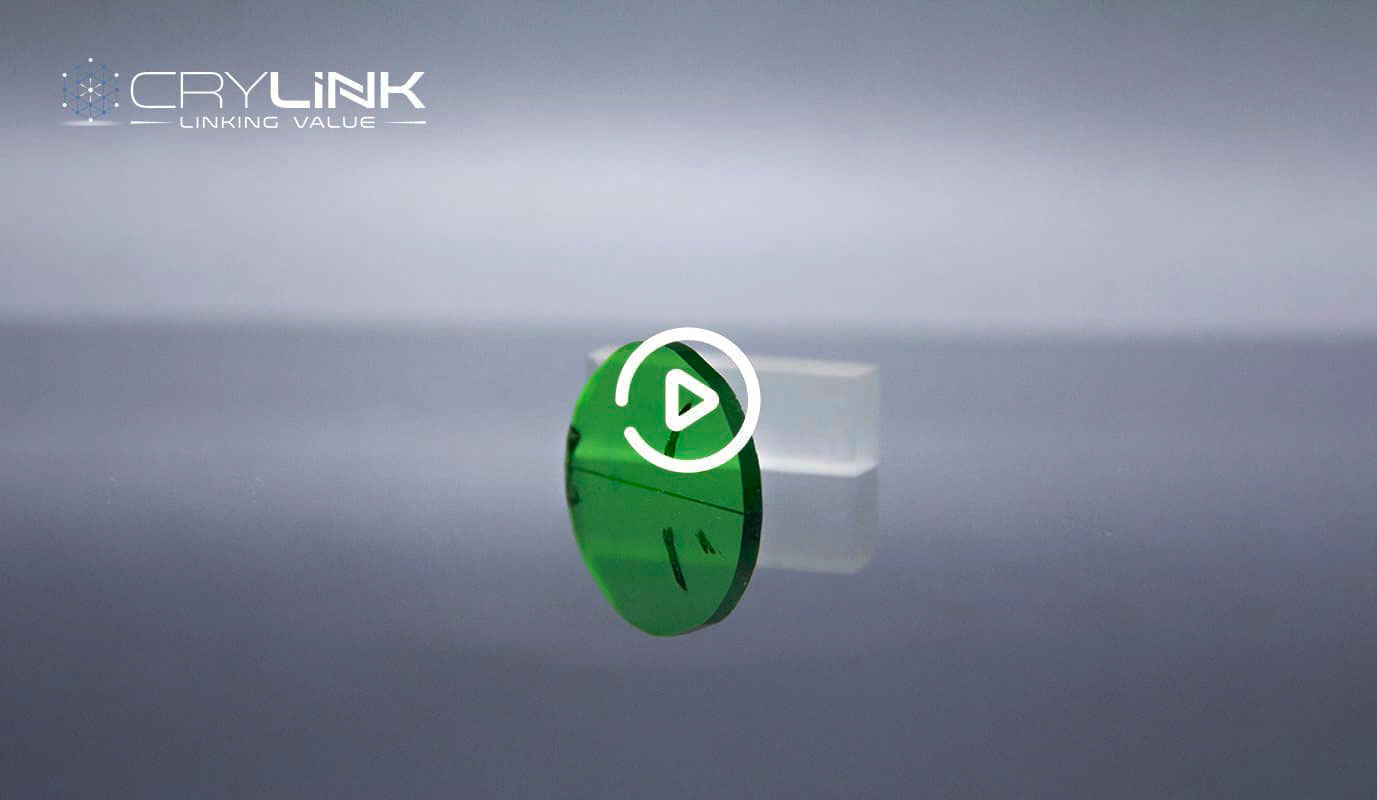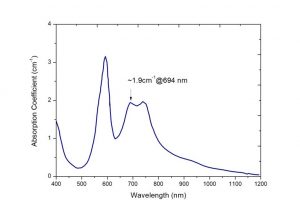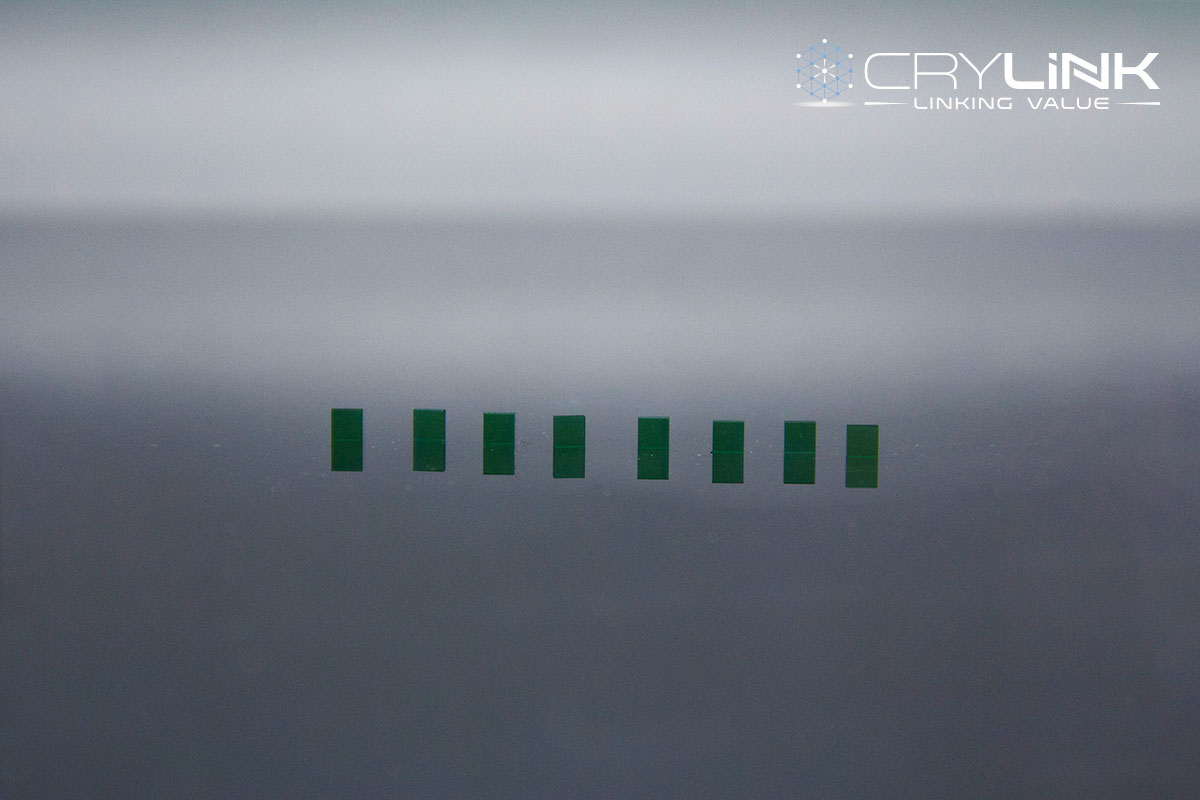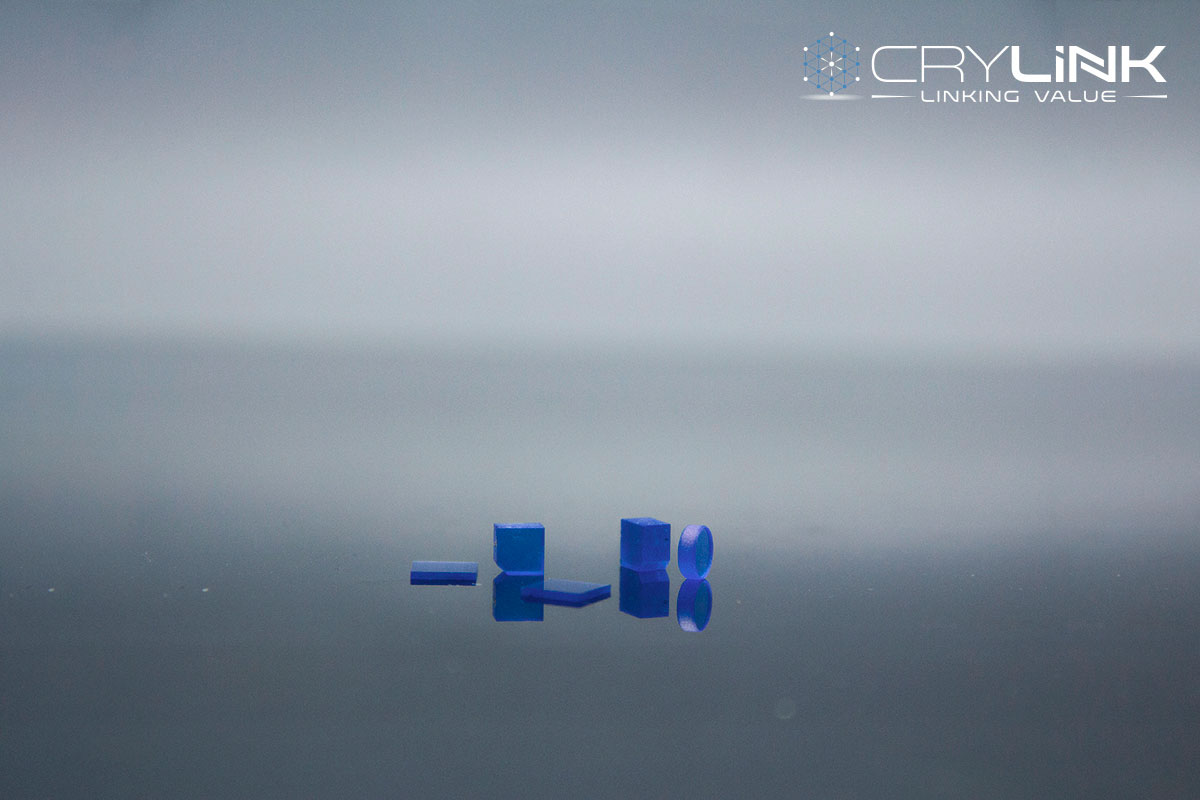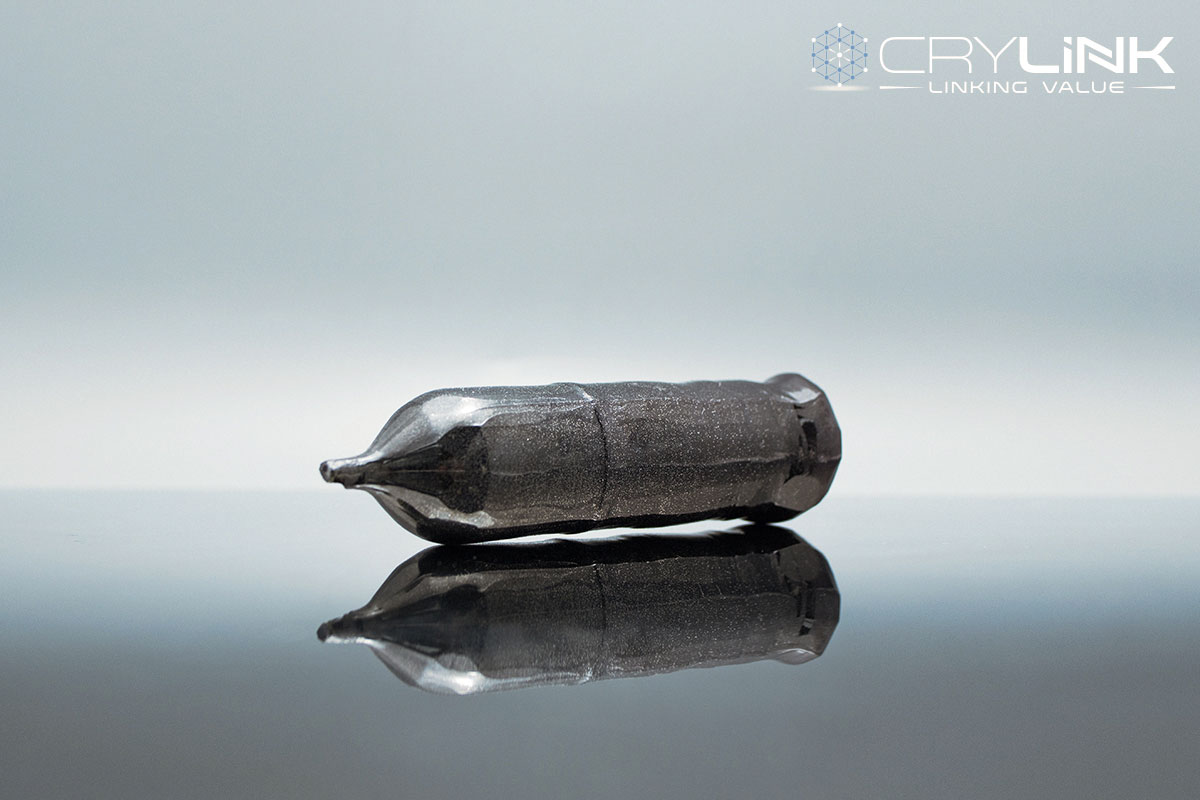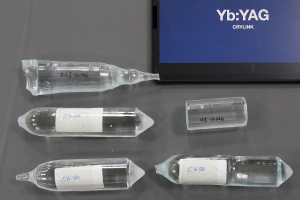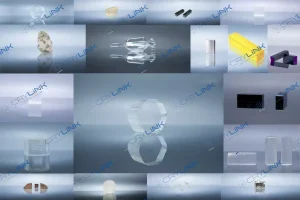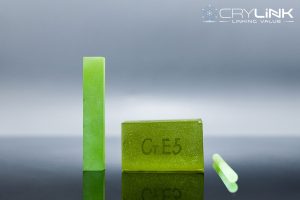Cr: GSGG
Cr GSGG crystal (Cr doped Gadolinium scandium gallium garnet) is a laser material with high efficiency. An electro-optic shutter element was first utilized to provide Q-switched operation of the ruby laser. Passive Q-switched ruby lasers were achieved with saturable dye absorbers and colored glass (compounds of selenium and cadmium sulfide. Recently the operational characteristics of a dye Q-switch for a pulsed ruby laser was still studied for application in underwater holography. However, the dye Q-switch was limited in durability because of degradation (decomposition) of the dyes and the glass Q-switch was readily damaged. Thus, the tetravalent chromium doped gadolinium scandium gallium garnet Gd3Sc2Ga3O12 (Cr4+: GSGG) passive Q-switch ruby laser-offers for the first time high reliability, durability and high efficiency.
Cr:GSGG crystal – a crystal which shows high efficiency and high reliability.
Cr4+: GSGG has been utilized for the first time to provide a saturable absorber Q-switch for the ruby laser. Single output pulse operation (100 mJ and 27 ns duration) with efficiencies relative to the free-running ruby laser operation of 25-30% was routinely obtained. The crystalline material GSGG:Cr3+ is currently of interest as a broad-band, room temperature laser material. The small separation between the 4T2 and 2E electronic levels of Cr3+ in the system can result in interesting spectroscopic behaviour. People have investigated the temperature dependence of the CW and transient luminescence, and have found it to be consistent with a model for the dominant Cr3+ site in which the lowest energy 2E and 4T2 levels are approximately coincident in energy at low temperature.
- High reliability
- High efficiency
- High durability
- Strong and saturable absorption
- Good thermal conductivity
Cr4+: GSGG used in saturable absorber Q-switch for the ruby laser
The tetravalent chromium doped gadolinium scandium gallium garnet Gd3Sc2Ga3O12 (Cr4 + : GSGG) passive Q-switch ruby laser-offers for the first time high reliability, durability and high efficiency. Single output pulse operation (100 mJ and 27 ns duration) with efficiencies relative to the free-running ruby laser operation of 25-30% was routinely obtained.
Optically pump-induced athermal and nonresonant refractive index changes in the reference Cr-doped laser materials: Cr:GSGG and ruby
| Optically pump-induced athermal and nonresonant refractive index changes in the reference Cr-doped laser materials: Cr:GSGG and ruby |
| Effects of annealing treatment and gamma irradiation on the absorption and fluorescence spectra of Cr:GSGG laser crystal |
| Cr4+:GSGG saturable absorber Q-switch for the ruby laser |
If you can’t find the Literature you want, Contact us to get the PDF Get the Literature
Parameter
| Refractive index at 1064 nm | 1.9424 |
| Index change with temperature, dn/dt,(10-6 k-1) | 10.9 |
| Elasto-optic constants | |
| P11 | -0.012 ± 0.003 |
| P12 | 0.019 ± 0.003 |
| P44 | -0.0665 ± 0.0013 |
| Emission wavelength (nm) | 1061.2 |
| Emission cross section (pm2)a | 13 |
| R2->Y3 transition linewidth (cm-1) | 11.5 |
| Nd3+ fluorescence lifetime (ps) at low concentrations (<1017cm-3 ) | 273-283 |
| Nd3+ concentration for which lifetime is reduced by 50% (1020 Nd ions cm-3) | 5 |
| Density (g*cm-3) | 6.495 |
| Heat capacity (J*g-1*K-1) | 0.4029 |
| Thermal conductivity (W*m-1*K-1) | 6 |
| Thermal expansion (10-6 K-1) | 7.5 |
| Poisson’s ratio | 0.28 |
| Young’s modulus (GPa) | 210 |
| Fracture toughness (MPa ) | 1.2 |
| Thermal- stress resistance (W*m-1)b | 660 |

